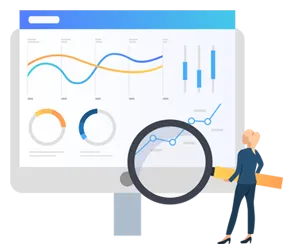3D-printed food was developed to create interesting and unique food designs and revolutionize the food production process by creating food efficiently and at a lower cost. Food 3D printers are mostly suited for architecting intricate shapes and designs, not cooking the ingredients. Usually, the edibles are either ready for consumption or will be cooked in an external oven (or grill) once the 3D printing process is finished. This technology is transforming the consumer experience and how foods are created with more complex and original shapes with innovative decorations. In addition to endless possibilities, 3D-printed foods may bring about many positive implications, including eliminating malnutrition, improving food scarcity, and creating new value chains. The critical motivators for 3D food printing are on-demand production, customization, and geometric complexity. There are various transformative potentials factors of 3D food printing, such as the following:
- Customized Food Design– Food customization processes involve hand-made skills with low production rates and high costs. 3D food printers provide a platform for those experimenting with food forms and flavors to achieve intricate and fantastic food designs that cannot be produced manually. Food printers can also customize colorful confectionary images and shape them onto a surface of solid edible substances. Additionally, food printers empower users to create delicious new recipes and dishes, making cooking more creative, faster, tastier, and healthier. When it comes to cocktail garnishes or 3D chocolate structures, candies, and sugar sculptures, a trained pastry chef cannot easily achieve the perfection that 3D food printers can.
- Personalized and Digitized Nutrition– The interest in food customization in terms of shape, dimension, internal structure, nutritional values, and taste has been exponentially increasing. 3D food printing produces food structures with desired dimensional, sensory, and nutritional properties. 3D food printing can precisely control people's diets by digitizing and personalizing their nutrition and energy requirements according to their physical and nutritional status. Personalized food printing promises to fix malnutrition problems and significantly improve well-being. For instance, Foodini is a 3D printing kitchen appliance developed by Natural Machines (Spain), an intelligent 3D food printing kitchen appliance that enables one to print their own real, natural ingredients into precise portions and shapes. Foodini helps create unique recipes and dishes, making cooking more creative, faster, tastier, and healthier.
- Broadening the Source of Food Material– 3D food printing can expand the source of available food material. Non-traditional food materials such as high-fiber plant-based materials, animal-based by-products, and insects can be used by these printers to create a variety of foods. Food printing can be used to print a variety of alternative protein sources such as vegetable sources, algae, and insects to reduce our reliance on animal proteins and achieve healthier diets. These alternative proteins are low in cholesterol and consume little space and water relative to livestock.
- Creating New Value Chains– 3D food printing can alter or broaden existing food value chains. It can also help to develop new products and services and change the manufacturing and preparation of food fundamentally. Further, it could eliminate the entire process and remove the need for grocery stores, chefs, or associated jobs.
- Simplifying the Supply Chain– 3D food printing facilitates smooth on-demand production and implementation of a build-to-order food production strategy. The technology makes it possible to locate production facilities near the end customer. Therefore, the delivery of food is no longer a restriction. This results in a shortening of the customized food supply chain and savings in packaging, distribution, and overhead costs. The need for large bulk inventories will be a thing of the past. Another benefit of food printing is its potential to simplify and facilitate food distribution in complex locations.
Download Research PDF @ https://www.meticulousresearch.com/download-sample-report/cp_id=4995
Related Tag:
Related Blogs:

Increasing Utilization of Archimedean Screw Pumps in Sewage Treatment
Read More
Transformative Potentials of 3D Food Printing
Read More
Technological Trends in Air Conditioners Market
Read More
Rising Investments and Advancements in the LiDAR Market
Read More
Increasing Adoption of Robots in the Manufacturing Sector
Read More
3D Printers Market
Read More
Solid-State Batteries Market
Read More
Surging Demand for Smart Sensor-enabled Wearable Devices
Read More
3D Machine Vision Meets Industry 4.0
Read More
Optoelectronics – A Promising Technology
Read More



